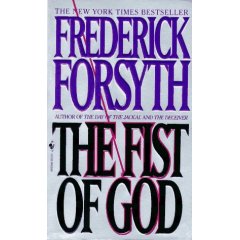Abstract:The third installment in The Dark Tower series, Stephen King's life long literary quest, again touches upon Roland's world and our own. As Roland, Eddie and Susannah travel on, they stumble upon Shardik. Shardik is an ancient machine in the form of a gigantic bear. But as with most of the things in Roland's world, it is winding down, or to put it bluntly, crazy as hell. Shardik attempts to kill Eddie who barely escapes to a tree top. But Shardik shakes the tree and it would soon topple. Yet Eddie's shouts bring back his companions, and Susannah manages to shoot the sensory device controlling Shardik and thus causing its death. Roland then tells his friends that Shardik is but one of twelve guardians who stand at the portals of the six beams which converge at the Dark Tower.
The twelve portals stand in the twelve edges of the world (or worlds) and the Dark Tower is in the middle. So they must follow the path of the Beam which Shardik guarded and it will lead them to the Dark Tower, distance unknown.
Meanwhile, in New York, Jake Chambers fears he is losing his mind. It seems that he is torn between two realities, New York and the world of Roland whom he seems to remember having left him to fall to his death in a chasm in the mountains. Yet Jake feels that he loves the gunslinger deeply. He also becomes obsessed with doors and feels that he must find the door to Roland's world soon or go insane. He wanders New York and comes upon a deserted lot in Manhattan. In it he sees the most beautiful rose he has ever encountered.
The rose is like a million suns and from it emanates good being and happiness and strength. Yet Jake senses that the rose is in grave danger and that Roland must become aware of it. Next to the rose he finds a key and takes it with him.
Back in Roland's world, Eddie starts carving a branch that he has found. He does not know why, but feels that he must shape a key out of it. Some days later, Roland's group reaches a demon circle. It is here that they must conjure the door through which they may draw Jake. Since the demon is a male, and all demons are highly sexual creatures, Susannah suffers its rough attention while Eddie portrays a door in the middle of the circle and fits the key in. In New York, Jake overcomes great dangers and fits his key at his end of the door. He it taken to Roland and the two embrace in love.
The four travel across the path of the Beam towards Lud, and ancient city. In it they know that there is a train that can take them over the Waste Lands and closer to the Dark Tower. In their way they stumble upon a billy-bumbler, a dog like creature, but highly intelligent. The billy-bumblers are reputed to bear the gift of speech, and this one is extremely proficient. The boy Jake names him Oy and it joins their group.
Lud bears a striking resemblance to New York, another proof that Roland's world and our own are linked. Lud is in turmoil for two groups fight in its streets and alleys without cease. The city's ancient technology is long neglected. One of the groups kidnaps Jake and Roland goes after him, assisted by Oy and its sense of smell, while Eddie and Susannah seek out the train station. Both Roland and the couple must fight their way against the city's bloodthirsty inhabitants.
The train, whose name is Blaine, is in fact a part of the powerful computer that had once governed Lud. Yet it, as other machines, has gained awareness and lost its mind. Blaine is a riddle addict, and through the promise of more riddles, the group manages to persuade it to carry them to the end of its line.
How long will it take is hard to tell for distances, directions and even time itself have gone hazy as the Tower weakens. They set out at full speed and pass over the Waste Lands. But once they get going, Blaine informs them that he intends to derail at the end of the line, killing himself and them to boot. Roland makes a deal with it that should they present it with a riddle it cannot solve, it will let them live. So ends, the third volume of the Dark Tower.
Review:An excellent book, exciting and fast paced. A must for all Stephen King and fantasy lovers








